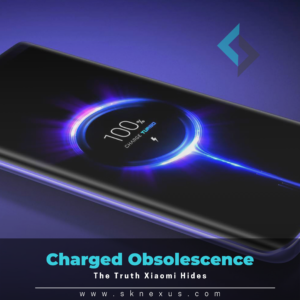In recent years, we have seen the gradual growth of e-commerce as an emerging business sector in different corners of the world.
With platforms like Alibaba, Jumia, and Amazon becoming bigger and bigger, it is only imaginable that the same can be said about their new challenges and new goals.
Forbes quotes research that identified the top 500 companies generated $849.5 billion in online sales in 2020, a 45.3 percent increase year-over-year and the biggest jump since Digital Commerce 360 began tracking the statistic in 2006.
This just proves how much time, money and resources are being invested to cater to the changing times and changing trends in an effort to give their consumers more diversity in products, quality in services while influencing consumer-buying habits.
Several of these e-commerce giants lie Alibaba and Amazon have also ventured into the world of finance, after understanding the utility it has to offer to their respective lines of business
The payments facilitation offered in their platforms proved to be a rich source of data on payments and transactions which allowed them to start extending credit and build solid credit scoring models along with other financial services to merchants and consumers.
This trend is also referred to as embedded finance.
But we’re here to discuss the new obsession of e-commerce business across the globe, which is the LAST MILE SOLUTION.
Last Mile Solution/Logistics (Not to be confused with 8 Mile the movie)
Where did this term come from? And why has it become the central focus for retailers in the e-commerce era?
The last-mile solution in the e-commerce world is used to describe the transportation of a package from a distribution point to the final destination as efficiently and cost-effectively as possible.
It is an approach through which e-commerce strives to attain and maintain customer loyalty, customer satisfaction and thus growth in market share.
Let’s imagine a case scenario where a customer does not receive their products fast enough? The next logical step would be to switch to a different platform with better delivery options.
Amazon has been championing the e-commerce business esp after the inception of its two-day shipping, much like the concept of free shipping to lure new customers.
Where’s There’s Money Involved There Are Challenges
Let’s try to understand a few of the challenges faced by e-commerce such as order fulfilment, shipping costs, order tracking etc.
The bigger the business, the bigger the orders, the greater the volume and thus greater the stakes (not the beef ones).
To survive in a competitive market demands heavy investments in the technology, infrastructure, and manpower but at the same time keeping overall logistics costs low, a tricky concept isn’t it?
From booking an order, receiving online payment, to packaging and delivering, all of these processes require hefty sums of capital investment. Building systems, hiring human resources and then managing the entire operations is certainly not a walk in the park
And on top of this ensuring quality control, driving efficiency and tracking each parcel sometimes may leave a business bankrupt.
Just try google-ing Why do eCommerce businesses go bankrupt? And you’ll come across some interesting theories.
In 2018, a study reported that businesses spent an estimate of $10 per order on last-mile delivery alone.
Another study revealed that businesses can witness profit declines by almost 26% over a three-year period if last-mile delivery is not optimized.
Noticing these stats, many businesses are shifting towards tech-enabled third-party logistics (3PL) companies in an effort to help businesses reduce unnecessary costs and ultimately optimize the last-mile delivery phase.
Last mile-carriers are also a recent phenomenon, referring to shipping companies that transport packages much like FedEx, UPS, DHL etc.
Carriers like UPS and FedEx have also delegated the delivery of their parcels to USPS to save money.
New Developments in the e-Commerce World
The ongoing pandemic situation has caused a lot of disturbance and loss of human lives but for the e-commerce players, it’s a blessing in disguise.
As physical stores were being closed down due to the lockdown, the demand for home deliveries and eCommerce increased dramatically.
Amazon reported a 26% increase in sales, generating $75.5 billion in 2020 but witnessed a decline in profits due to the inability to meet last-mile delivery expectations.
As discussed above the shift is more towards ‘contactless delivery’ options that guarantee efficiency and ensure safety. As new technology continues to break barriers, there are new and innovative last-mile delivery methods based on automation.
One example is FedEx, a company that introduced a prototype of the same-day delivery bot, Roxo back in 2019.
Another huge aspect of the last-mile delivery solutions is fulfilment location. This means that orders must be able to ship from a location closest to the end destination.
The idea of growing the number of fulfilment centres across diverse regions in order to target the untapped segment of the population and leverage last-mile delivery to get them there on time.
e-Commerce giants like Amazon have already removed this burden by delegating this portion to third-party services that can deliver packages to their customers over the last mile.
While others are busy investing in setting up more distribution points along the metropolitan zones and will benefit from the services of DHL, FedEx, and local courier services to perform last-mile delivery services.
Key Features for Last Mile Solutions
I know we discussed the concept of 2-day delivery but we’re known to be a generation that collectively suffers from anxiety
This brings me to my next point
The increased demand for same-day delivery has started a chain reaction where businesses are creating more and more modern last-mile facilities near big cities to meet the demands of the customers.
But be it two-day delivery or same-day delivery, it’s important to know what are some of the key features to make deliveries more efficient and hassle-free:
Just the right location
It’s a common myth that delivery points that are located near major highways and bridges can deliver to more destinations.
Safe and Secure Warehouses
It’s important that storage spaces or warehouses are designed to have wider spaces for storage but also constructed in a way that their structural and electrical capabilities are not strained and limited.
Cross-dock capacities.
Enhancing cross-dock capacities is also one challenge food and beverage online platforms are having a hard time with. Cross-docking is the practice that involves the speedy collection of goods at one door of a facility and shipping out through another effectively, this is mostly used in the transportation of perishable goods such as food and beverages where storage is unneeded.
Future-proof planning
As time progresses there is a high demand for innovative solutions such as the future of electric charging stations in the world of last-mile facilities. The cost of delivery tends to take over 30 percent of the overall cost when dealing with last-mile delivery which includes labour and mostly fuel – which through an eco-friendly approach could be solved with a winning advantage.
Conclusion
It is evident that if e-commerce businesses across the globe want to scale they must be able to enable last-mile delivery solutions to overcome challenges pertaining to this industry such as order booking, online payments, shipping costs, and order tracking.
And for all this to work efficiently, you need a solid tech infrastructure.
For this very reason, in my opinion, the last mile can be extremely inefficient. The cost to execute futuristic ideas and make innovative logistical support systems e.g. drones, flying warehouses or self-driving cars, is more than what companies were willing to invest as of this moment or simply can invest.
I mean you need a policy-level seriousness on the government table to bring such revolutionary ideas into existence and that’s presumably too much to ask for!
But that does leave us with one basic and old question: How can last-mile delivery be efficient and cost-effective?
Through frugal innovation!
More simply put, last-mile delivery efficiency can also be enhanced through better communication and coordination during the movement of freight or products between a distribution centre and the point at which the end consumer will receive it.
Though the e-commerce business sector may seem to be only for business-to-consumer sales (B2C), it is important to realize that business-to-business (B2B) sales continue to be one of the most important sales segments for most carriers.
SK NEXUS is on a mission to make knowledge more accessible – around tech, around career, around business. There’s a severe gap for actionable knowledge around us – we are on a mission to fill that need.
Your contribution today can help us create more valuable content for many years to come. You can always pitch in by clicking the below.
Your continued support has supported 100+ high quality pieces of valuable content so far.
Experienced and energetic marketing specialist with over 7 years of experience – Khayyam loves to share his thoughts on startups, disruptive innovation, and whatever piques his interest.





